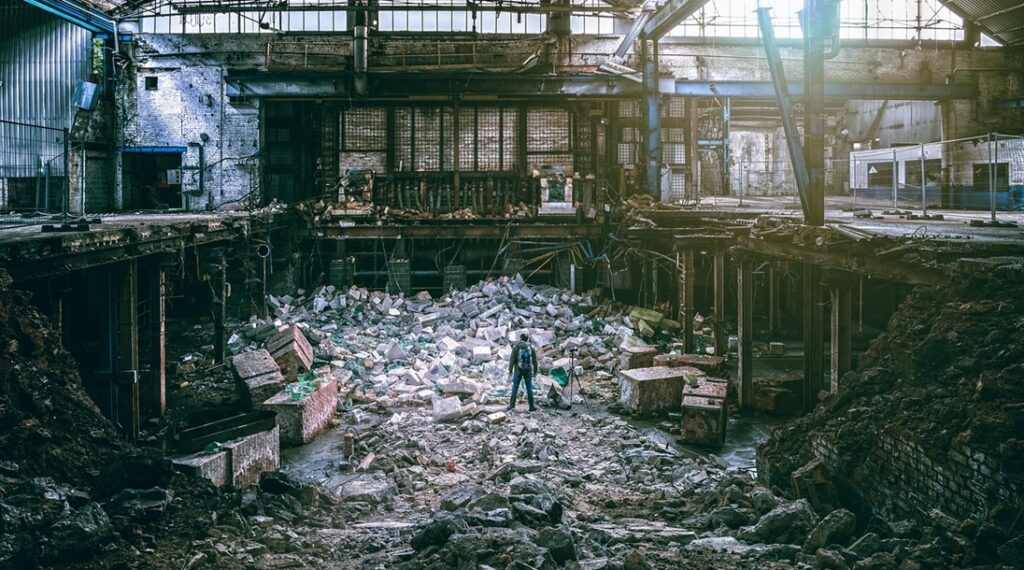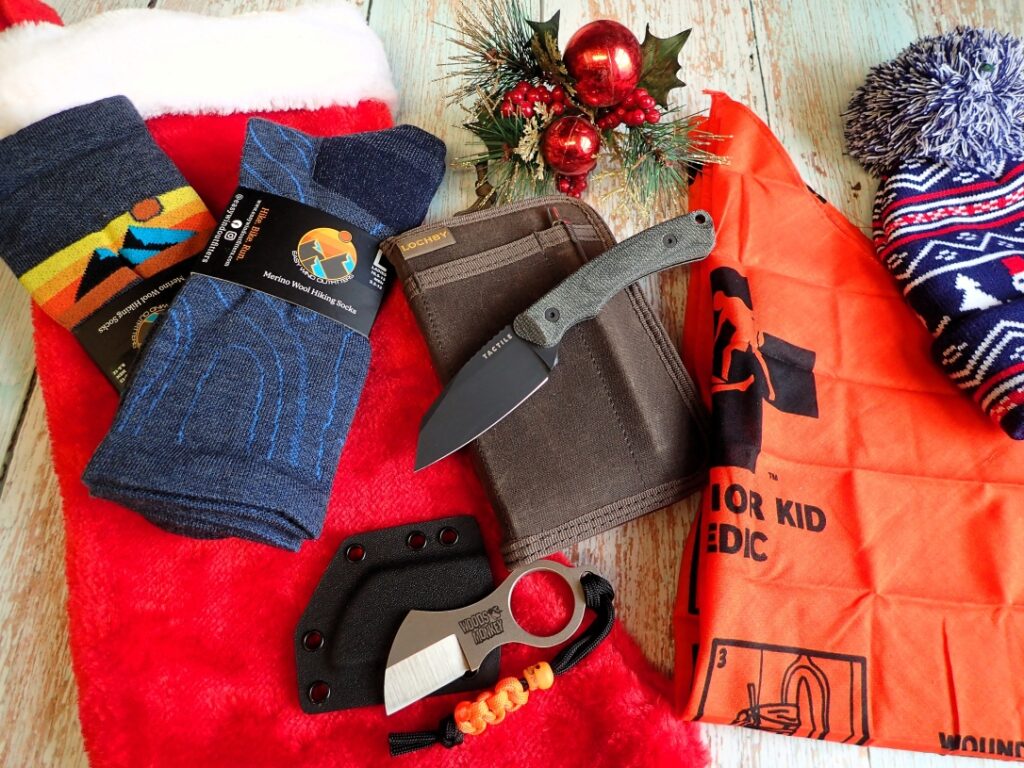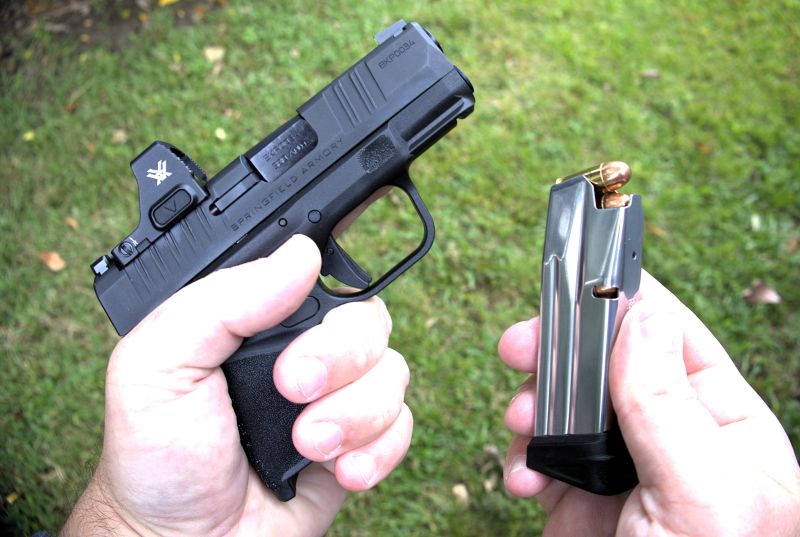Have you ever perused the gun counter and spotted a firearm you instinctively knew was junk? They often have a distinctive look, don’t they? Typically, they’re either excessively shiny or, if not, their black finish is flaking off. You can often tell it’s made from “pot metal.” It’s usually cheap, and if you’re like me, it’s cheap enough that you simply can’t say no. The Lorcin L9 was one of those guns for me.
The Lorcin L9
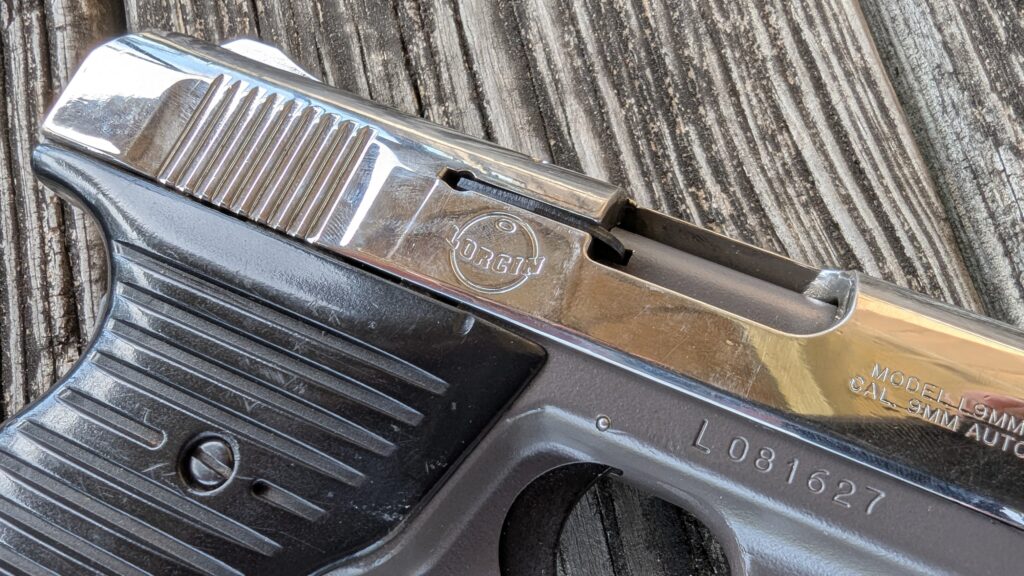
For less than 100 dollars, the Lorcin L9 was mine. I knew it was junk, but the 90-dollar price tag and the somewhat humorous nature of its design intrigued me. I have a fascination with “Saturday Night Specials” and their history. The L9 traces its lineage back to the Raven MP-25, often considered the original American Saturday Night Special.
Advertisement — Continue Reading Below
Lorcin L9 and Raven: A Shared Lineage
The design of the two guns is basically identical, except that instead of chambering the anemic .25 ACP, Lorcin stepped it up to 9mm with the L9. The reason the L9 is so identical to the Raven is because of their direct connection. A man named James Waldorf founded Lorcin, and he was best friends with Bruce Jennings of Jennings Firearms. Bruce Jennings was the son of George Jennings, the founder of Raven.
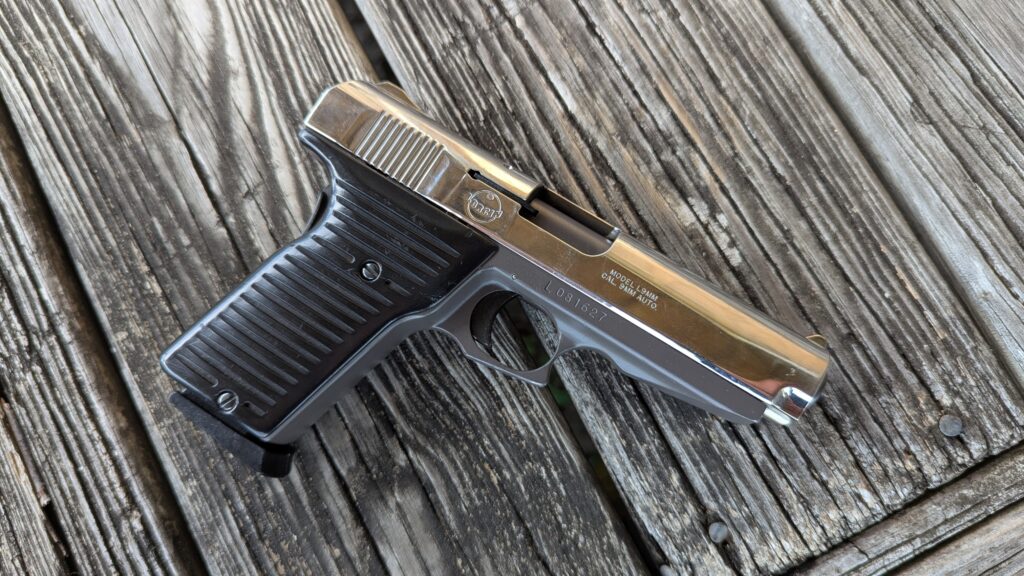
In the early 1990s, these guns were ubiquitous. A half-dozen different companies formed what was known as the “Ring of Fire,” pumping out cheap, blowback-operated “pot metal” guns. Lorcin eventually rose to prominence. In 1993, it was the number one pistol manufacturer in the country, producing almost 350,000 handguns.
Advertisement — Continue Reading Below
Lorcin’s primary product wasn’t the L9, but the L-22, a semi-auto .22LR that looked and operated much like the Raven. They expanded into various calibers, creating the L-25, the L-32, the L-380, and eventually the L9. The L9 would be the largest and most powerful of their handguns. It’s quite literally just a macro-sized version of all their other firearms.
Handling the L9: A Closer Look
The L9 is a heavy gun. The slide has to be extremely heavy to function safely as a blowback-operated pistol. It’s a lot of Zamak (a zinc alloy) packed into a shiny metal slide on a heavy metal frame. It’s a striker-fired gun with a single-action-only design. The gun features polymer grip panels and feeds from a ten-round, AWB (Assault Weapons Ban)-era-compliant magazine.
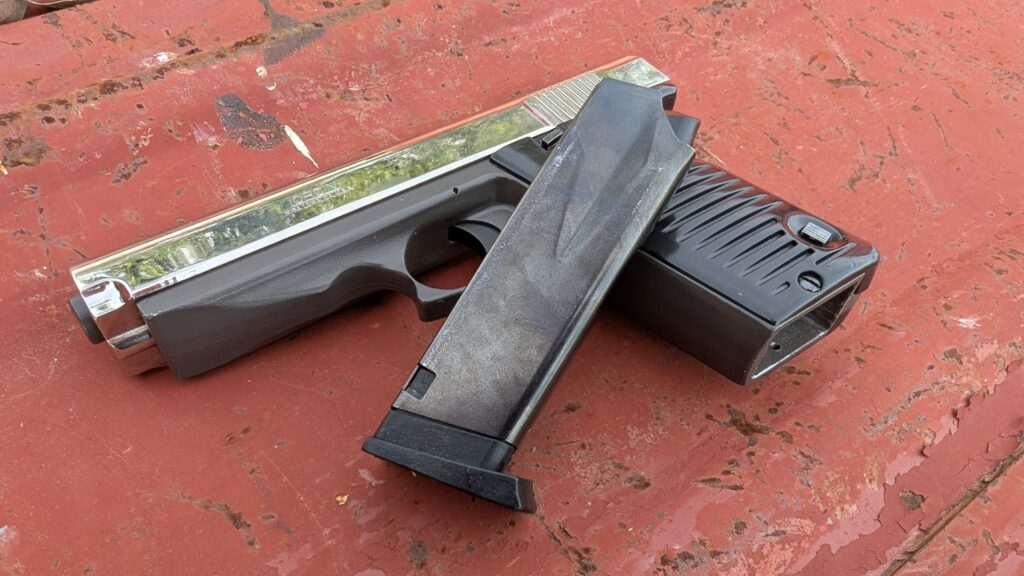
Advertisement — Continue Reading Below
The cheap design incorporates numerous cost-saving measures. The sights are built directly into the slide as part of the Zamak mold. The magazine release is located at the bottom of the grip, a budget-friendly solution. The magazine itself seems to be a proprietary design due to the magazine catch. Interestingly, the magazine will not lock into the gun when fully loaded, requiring it to be downloaded by one round.
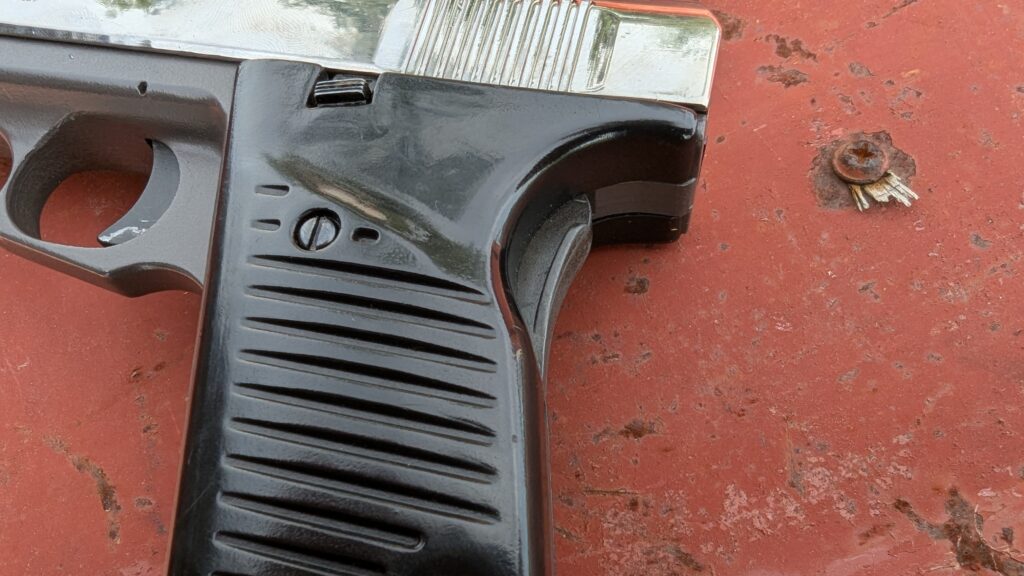
A tiny safety lever sits on the frame, accentuated by where the thumb rests. There’s also a grip safety, which is an interesting touch for such a firearm. The L9 is not an ergonomic gun. It’s wide, it’s heavy, and you can tell it’s made from sub-standard materials.
Advertisement — Continue Reading Below
To The Range with the L9
Did you know that a shiny finish like this reflects things? Including the sun. Living in the Sunshine State and shooting the L9 is a challenge. The reflective glare from the slide can be a real hassle. Not always, but it depends on the direction you’re shooting and the angle at which the light is hitting you.
The sights do have red dots to provide contrast against the chrome finish. They are easy to see and align. The trigger, however, is terrible—like, really bad. It’s gritty, heavy, and its weight seems to jump around. It’s heavy, then it simply breaks with no discernible wall or lead-up; you just pull against a dead weight until the gun fires.
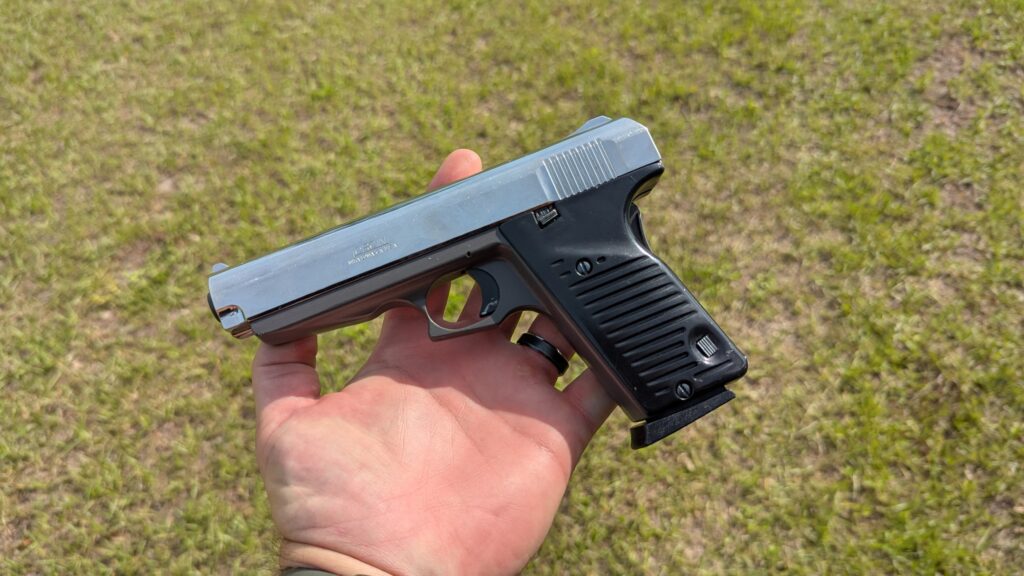
Advertisement — Continue Reading Below
This action sends the heavy slide rocketing backward, creating a fairly intense recoil impulse. It’s a 9mm that recoils more like a 10mm. The heavy slide creates excessive recoil and muzzle rise, pulling the gun up and off target, then racing forward and slamming home. When it slams home, it pushes the entire gun down. It’s not a very pleasant recoil impulse and leads to slow and inaccurate shooting.
In terms of mechanical accuracy, it’s just fine. It can produce a five to six-inch group at 15 yards if you shoot slowly. If you start shooting fast, your accuracy degrades very quickly. While you can hit a target, the gun doesn’t always run reliably.
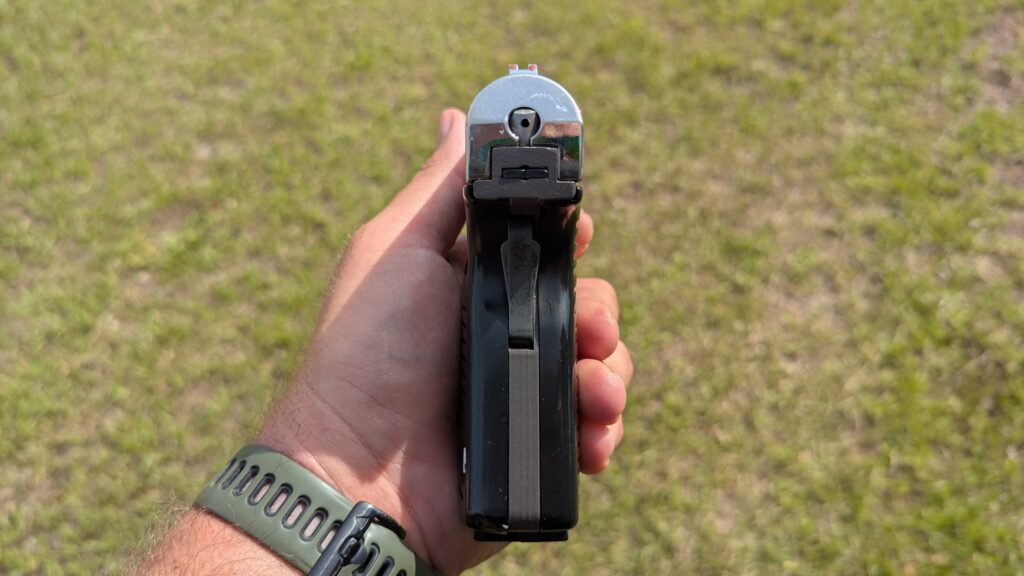
Advertisement — Continue Reading Below
The last round of the magazine rarely ejects properly. This means you effectively have eight rounds of ammunition in a gun designed to hold ten. That’s not ideal.
Is It A Surprise?
The Lorcin L9 isn’t a good gun, but no one’s surprised, right? I didn’t expect it to be anything other than a piece of crap. A big piece of crap. I was right, so I wasn’t disappointed. The Lorcin L9 might be a piece of crap, but it’s still a part of American history as a “Saturday Night Special,” and that’s why I like it.
Advertisement — Continue Reading Below

